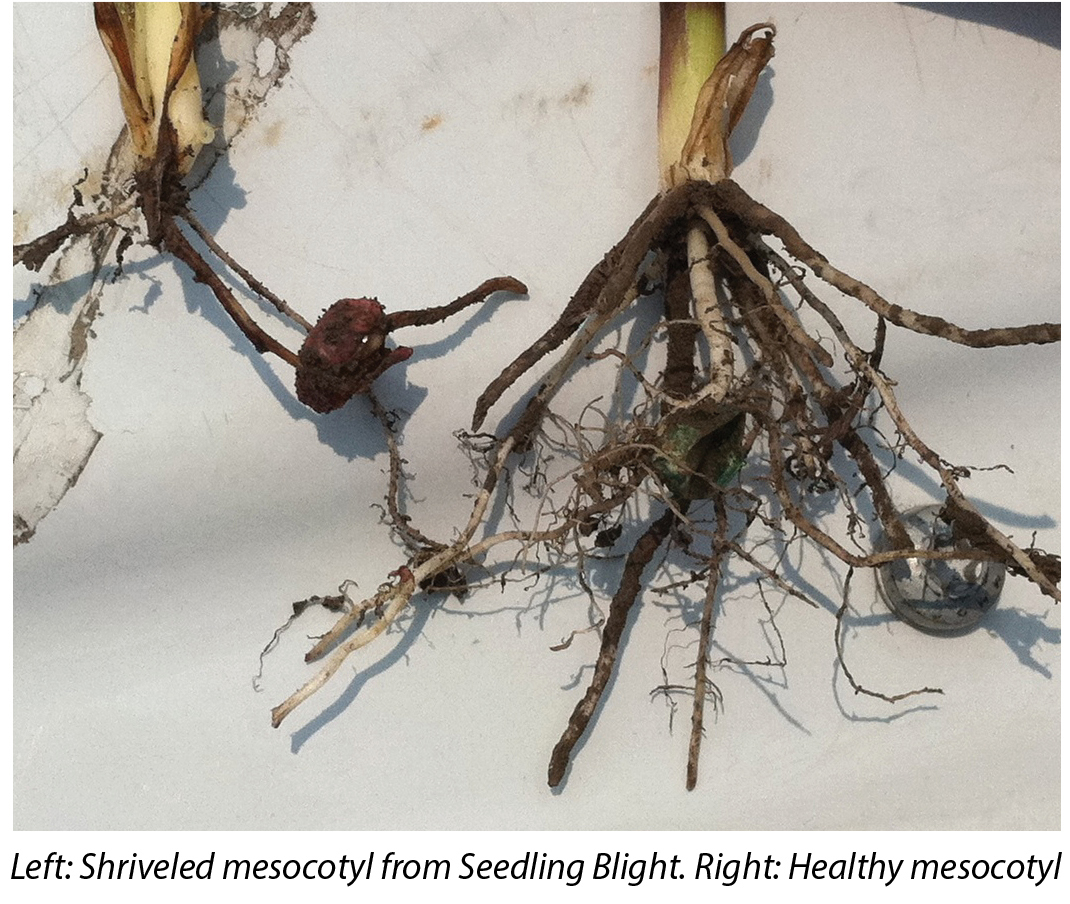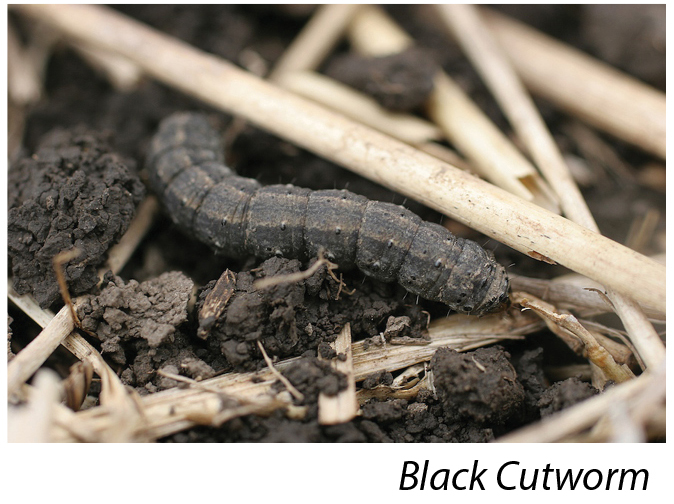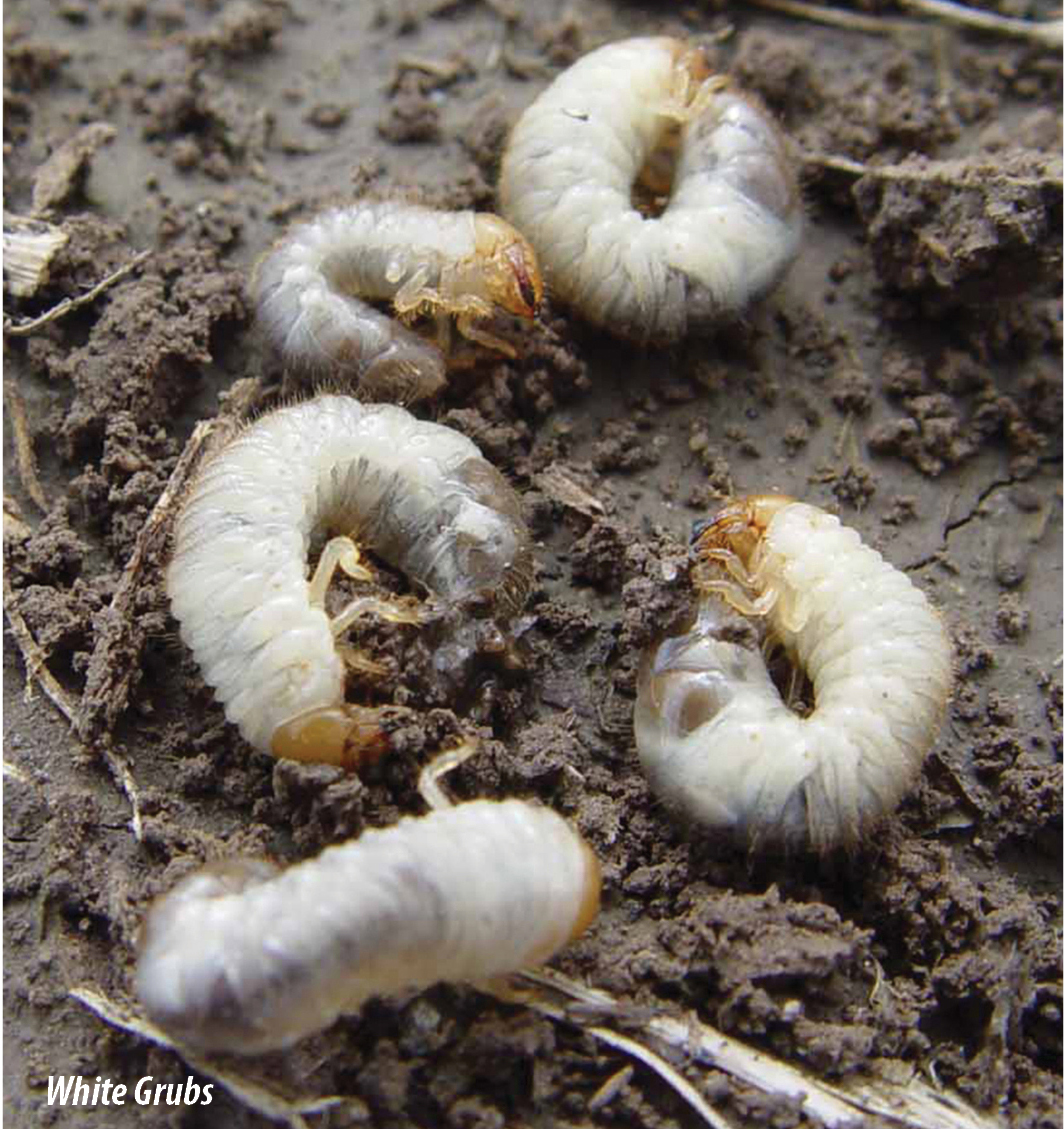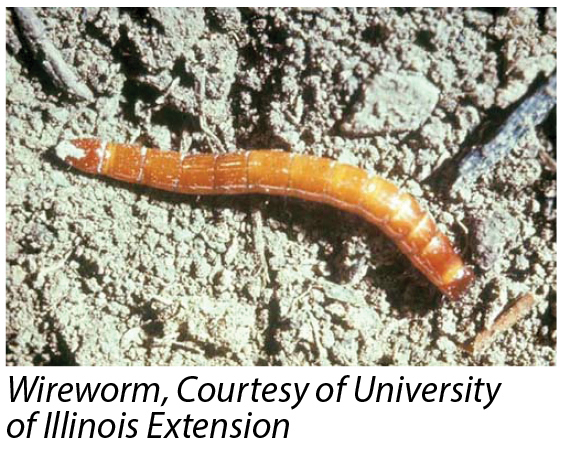Early season corn pests and diseases
As corn planters begin to roll it’s important to understand pests and diseases which may show up in the early stages of the corn plant’s life cycle. Early recognition and identification of the problem will enable you to make timely management decisions to protect your yield potential.
Seedling Blight – – Is usually not widespread, but often shows up in some areas every year. A few common examples of blights that affect corn include Pythium, Fusarium, and Rhizoctonia. Even though they’re all unique, the best practices to prevent them are often the same.

Soil temperature and moisture greatly influence corn germination and emergence. Corn germinates and grows very quickly in soil temperatures above 68⁰F, but in soil temperatures below 55⁰F germination and early growth is slowed, making the seedling more vulnerable to blight pathogens. Saturated soils deprive emerging seedlings of oxygen which also inhibits growth. For these reasons, seedling blights are often more prevalent in areas of fields that tend to remain cool and wet such as those with poor drainage, high residue or heavy soils.
Seedling blight can be identified by digging up stunted plants, or plants that have not emerged, and examining the seed and mesocotyl. If the seed is soft and rotten, or the mesocotyl appears brown and shriveled, it’s most likely the result of seedling blight. Damage to the mesocotyl or kernel before the establishment of the nodal roots will often result in unproductive or dead plants.
All Wyffels seed is treated with a premium mixture of fungicides that offer unique modes of action to help battle pathogens that cause seedling blight. They are very effective, but planting into favorable conditions is the best way to prevent seedling blight.
Black Cutworm – There are several species of cutworm that attack corn in the Midwest, but the black cutworm poses the most serious threat. Depending on the size of corn plants when they attack, one black cutworm larva can cut up to five corn plants in its lifetime. Black cutworms do not overwinter in the Corn Belt, but the moths move up from the south with springtime winds and storms.
The time and area in which cutworms will be most prevalent varies from year to year, but they most commonly move into the Midwest in March through June. The moths are most attracted to, and will lay their eggs, in early spring vegetation—making no-till, cover crops and fields with dense plant growth most susceptible.
Newly hatched larvae feed on weeds and/or young corn plants leaving small irregular holes in leaves. This early feeding does little to affect yield of young plants, but it is a good indicator of the potential for severe damage by later instars of the cutworm. Larger larvae may notch the stems of corn plants below the soil surface causing them to wilt and die, or they can completely cut through stalks causing major stand reductions.

Economic thresholds vary based on the size of larvae and the stage of corn. A general recommendation is to apply a rescue insecticide treatment if 3%-5% of the plants show damage and 2 or more live larvae are found per 100 plants. Hybrids containing the SmartStax®, SmartStax® PRO or Trecepta® traits, as well as most soil-applied insecticides, can provide some level of protection against black cutworm. However, high cutworm populations can cause economic damage regardless of trait or insecticide, and therefore all fields should be scouted. Rescue insecticide treatments are available if damage is identified.
White Grub – There are several species of white grubs in the Midwest. The most common species are the larval stages of May/June beetles and Japanese beetles. The grubs of May/ June beetles have a three-year life cycle, so if damage was noted the previous year, it could be seen again in those fields. Grubs of Japanese beetles only have a one-year life cycle and it’s unlikely they will pose a problem after mid-June.

There is no rescue treatment for white grubs. However, if a high population is discovered during tillage, or you are forced to replant because of white grubs, a soil-applied insecticide can be used to control the population and protect young seedlings from feeding.
Wireworm - Wireworms are the larval stage of the click beetle. They overwinter in the soil as both larvae and beetles. A larvae life cycle can span two to six years, so if you have fields with known infestations, even minor, they are more likely to have problems in following years. Wireworms will attack corn in a couple of ways. In freshly planted corn they will hollow out the seed, preventing germination. After emergence they will attack the plant by burrowing into the stalk, and sometimes all the way through it.
The first sign of wireworm damage is lack of germination, and you will find areas with only a few plants germinated. Continued evidence will be wilted seedlings from feeding that occurs after germination. Finally, on V2 to V5 plants, you will see the center leaves of plants begin to wilt from wireworms that have burrowed through the crown of the young plant. Damage is most prevalent in cool, wet conditions. As soil temperatures warm and become drier, larvae migrate deeper into the soil to find cool moist soil, which means little damage will occur after mid-June.

Damage is more likely found in fields with poorly drained soils, and also occurs more routinely in fields following small grains, double-crop soybeans, or fields previously in hay or pasture.
There are no rescue treatments for wireworms. If you have a known infestation prior to planting, the use of soil-applied insecticides can help control the population. If you are replanting because of wireworm damage, soil insecticide is highly recommended.
Summary
Success starts at planting. Ensure corn is planted into a favorable environment to maximize its chance of successful germination. Knowing the most susceptible fields will help you focus your scouting program. Conduct timely scouting throughout May and June to detect early signs of pests and diseases. This will equip you with the information you need to make the appropriate early season management decisions. Small reductions in stand and stunted plants can add up to significant yield reduction.
